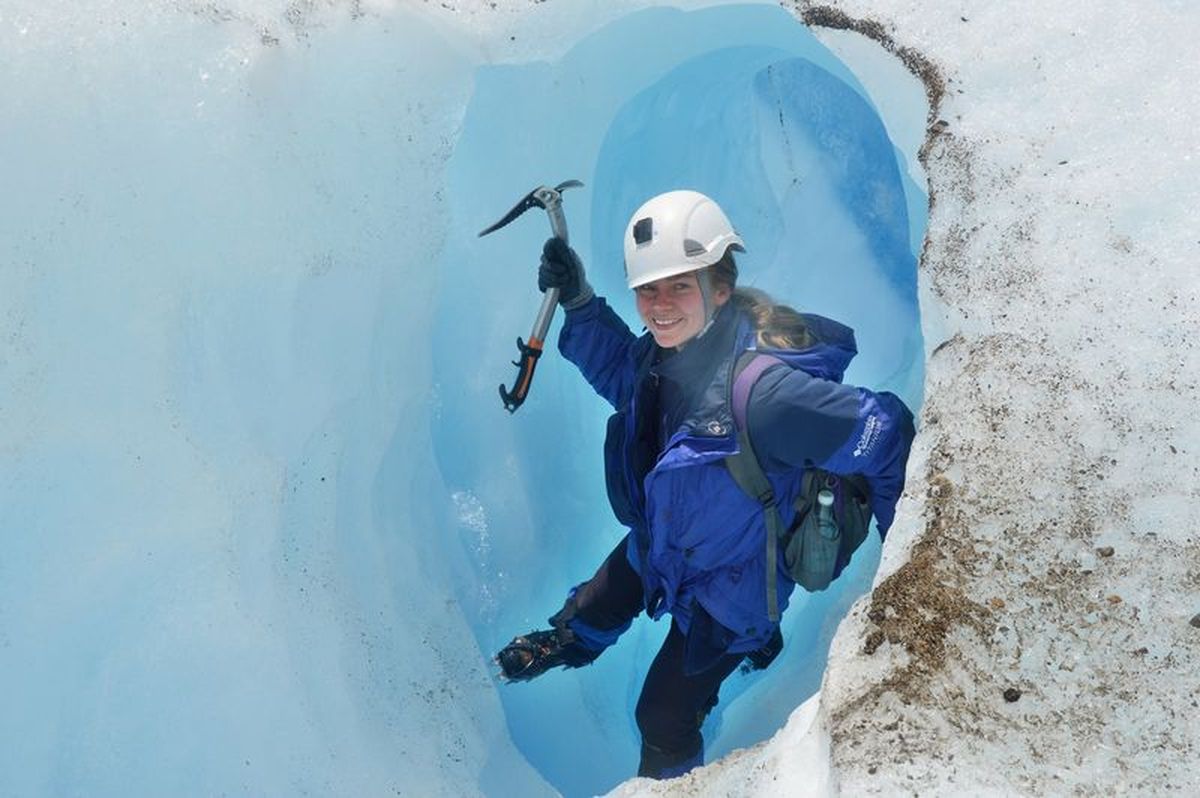When I traveled to Chilean Patagonia, I had a chance to hike Exploradores glacier. Have you ever imagined walking atop a massive sheet of ice, surrounded by towering peaks, while carefully placing your crampons on the crispy ice? In this article, I will tell you how to organize your trip to this amazing place.
Содержание
Where is Exploradores Glacier?
Exploradores Glacier is located in the Aysén region of Chile. It belongs to Bernardo O’Higgins National Park, which encompasses a large portion of the Patagonian Ice Field. The glacier is situated in a remote, rugged area of the Andes. The nearest town is Puerto Río Tranquilo, located about 70 kilometers (43 miles) north of the glacier.
A Brief Introduction to Exploradores Glacier
Exploradores Glacier is a massive sheet of ice that descends from Mt San Valentine, the highest mountain in the region. This impressive glacier spans a whopping 18 kilometers. It is home to a beautiful array of rock, crushed stone, and frozen water.

Unfortunately, the glacier is facing some challenges. Dust from fires, bare soil, and exhaust fumes settle on its surface, causing it to darken and heat up more quickly. This speeds up the melting process and threatens the future of this natural wonder. As the glacier slowly moves through the landscape, it has the power to shift heavy boulders and trees with its immense weight. It leaves behind a moraine – a mixture of clay, gravel, and earth – in its wake.
Preparing for the hike on Exploradores Glacier
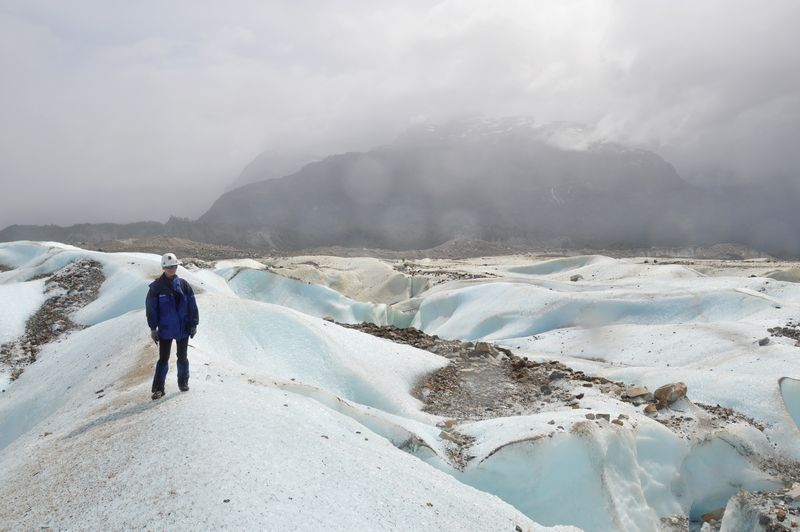
How to get there
The Exploradores glacier tours start from the small town of Puerto Rio Tranquilo.
- The nearest Balmaceda airport and a big bus terminal are located in Coyhaique. You can get there from any major city in Chile.
- Then you can take a local bus to Puerto Rio Tranquilo.
- If you’re coming from Chile Chico (argentinian border), a minibus can take you directly to the town.
Where to book a tour?
The only way to go ice trekking on the Exploradores glacier is through a travel agency. These tours include transportation to the trailhead. They usually take around 9 hours, with 2 hours of driving, 2 hours of trekking in the valley, and 3 hours of walking on the glacier.
There are many tour operators that offer trips to the Exploradores glacier. For example, 99% Aventura, Huente-Co (the agency I went with) and Valle Leones. In 2023, the cost of these tours is around 99,000 CLP (120$).
Can I visit Exploradores glacier without a guide?
If you have a vehicle, you can visit the viewpoint over the glacier on your own. Simply take the narrow X-728 gravel road that starts from Puerto Rio Tranquilo. The drive offers breathtaking views of Mount San Valentin, Tranquilo lake and Nutria Waterfall.
When you arrive at the Exploradores refuge, you’ll need to pay the 8200 CLP entrance fee (cash only) to enter the Laguna San Rafael National Park. The trail is open from Tuesday to Sunday, from 8:30 AM to 1:00 PM, but you are allowed to stay in the park after these hours.
From the ticket office, you will follow the path through the forest and ascend to the viewpoint of the glacier. You are not allowed to hike on the glacier surface without a guide, but you can join a group at the entrance to the park.
Best time to go
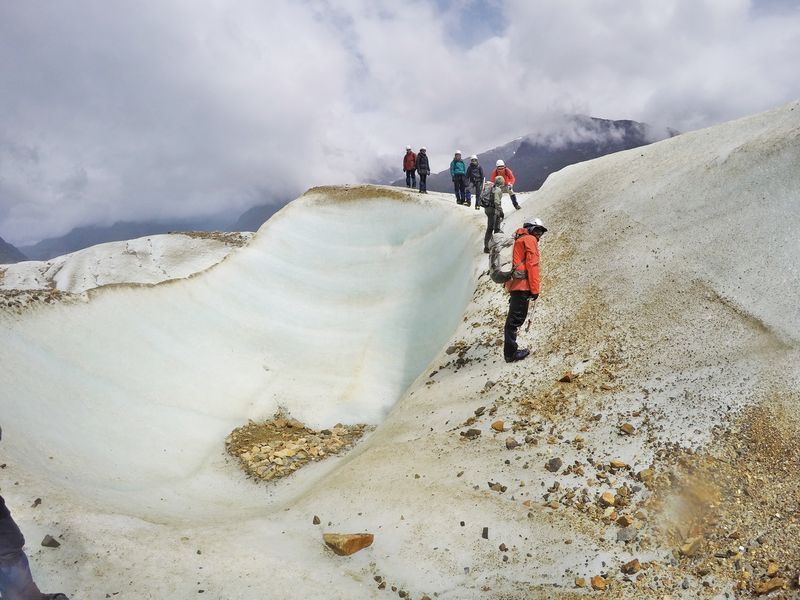
The best time to go to Patagonia is between mid-August and mid-April. September, October, November, and December are good options, as the weather is pleasant and the destination is less crowded. Prices for accommodation and tours tend to be higher in January and February, the peak season in Patagonia.
In winter the Carretera Austral is often closed due to heavy snowfall. It is not a good time to visit Patagonia. Many hotels are also closed during this time. Plan your trip carefully.
Packing list
Here are some items you will need for your ice trekking on the glacier:
- Trekking shoes with good grip. The travel agency can provide you with them.
- Warm and waterproof clothing. Weather in Patagonia can be unpredictable, so be always prepared for rain and cold temperatures.
- Hat, sunglasses, and sunscreen: protect yourself from the harsh sun.
- Water bottle. You can refill it with the glacier water.
- Camera or go-pro to capture all the breathtaking sights on your trek.
Step Foot on an Endless Ice Sheet at the Exploradores Glacier
Our group set out early in the morning and arrived at the glacier around 10:00. A few rounds of mate, a delicious type of Patagonian herbal tea, finally woke me up.
At the beginning we had to hike uphill for an hour through rocky terrain. We were surrounded by a harsh landscape of gray sand and deadly pale lakes.
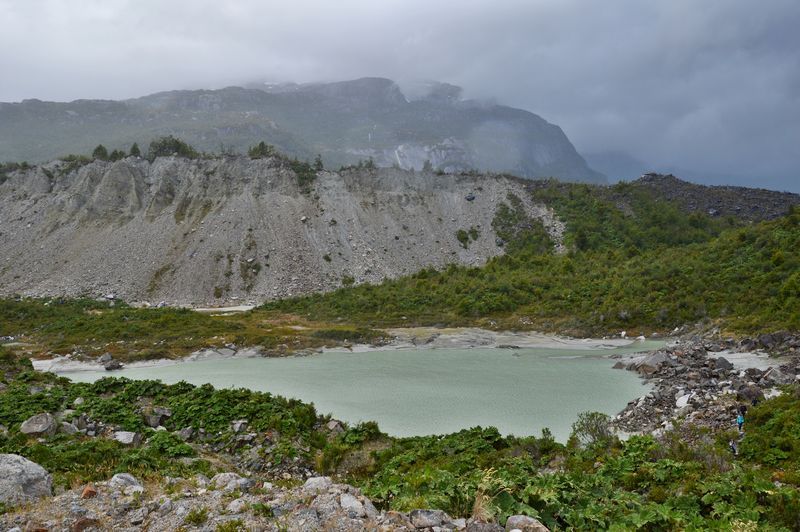
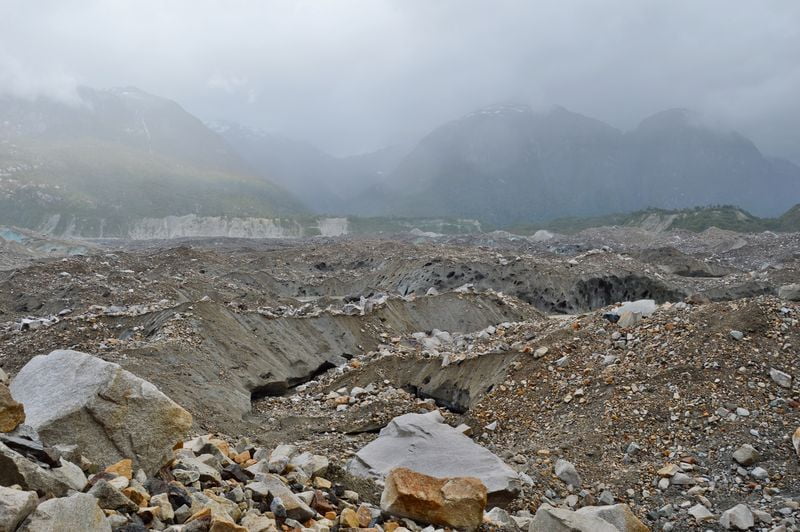
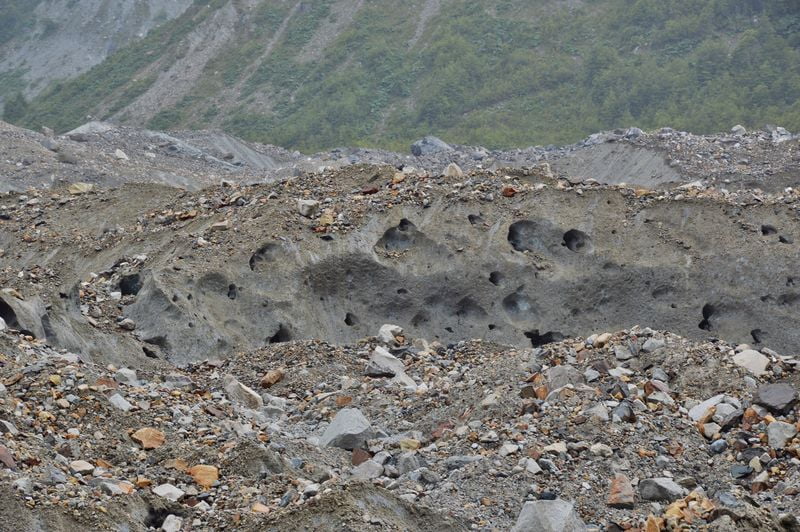
Once we reached the edge of the ice field, we had to climb over a loose mound of stone fragments. This is known as the final moraine. If you are lucky, you can find fossils of plants and shells. When we arrived at the edge of the ice field, the views were breathtaking. The enormous ice field stretched out for miles to the horizon.
We continued walking on the mixture of ice and stones. It was a bit slippery, and I ended up falling and cutting my hand on a sharp rock. After reaching the smooth white ice, we finally put on our crampons.
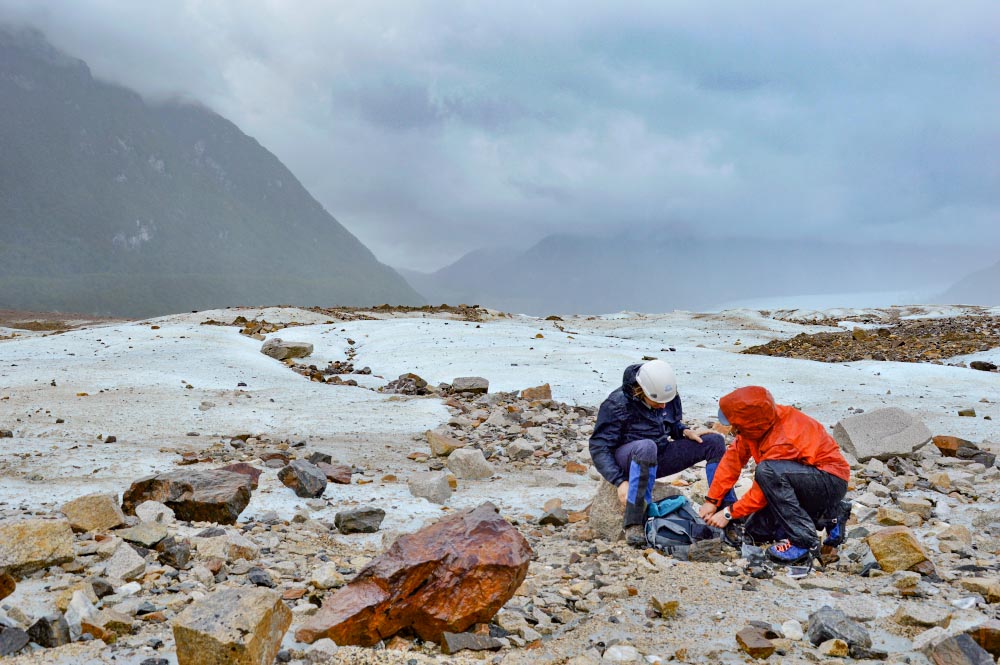
Most of the time we were walking on compressed snow called firn, which is made of long-term compacted ice chips. The sharp edges of the crampons clung to the surface, making it easier to traverse the slippery terrain.
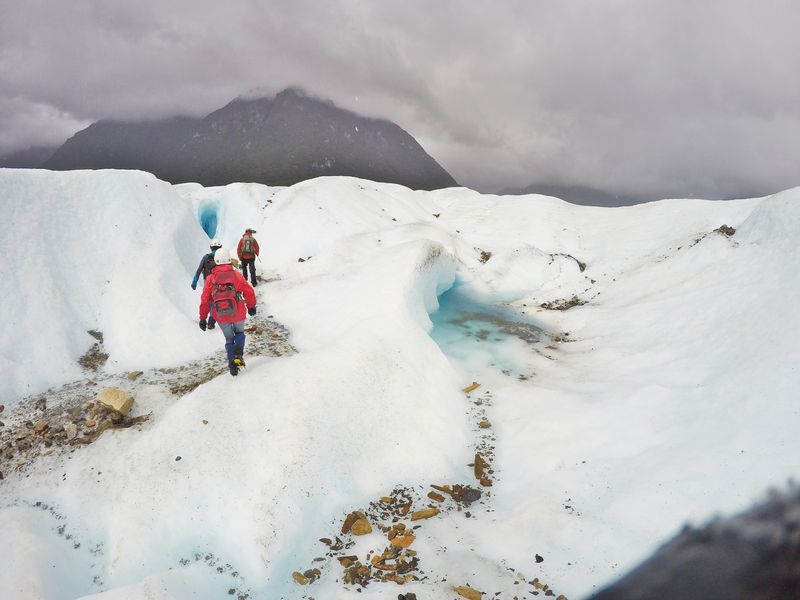
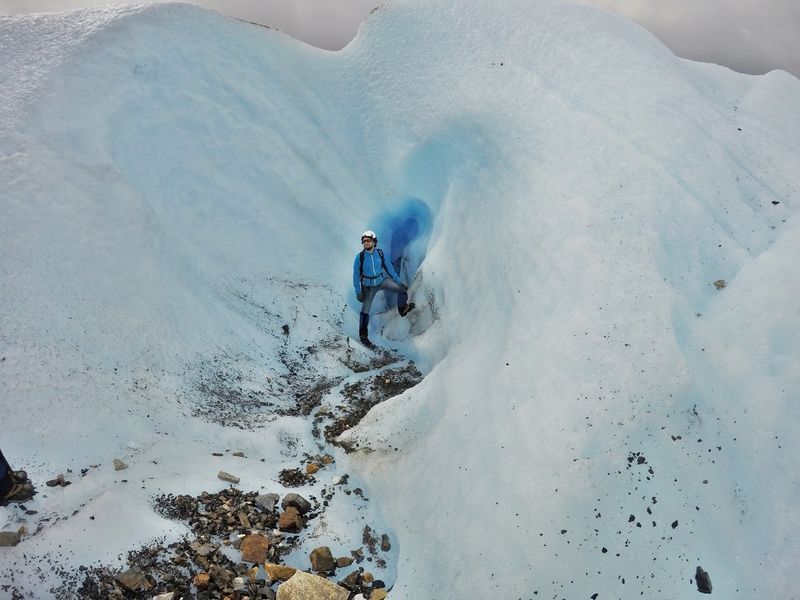

The Exploradores is a regressing glacier. It means it can no longer build up mass over the winter. In the summer, the lower layers melt faster than new ones can form. But not all glaciers in Patagonia are experiencing this. Some, like the Perito Moreno glacier in Argentina, are still fighting global warming.
Glacier stripes


During the summer, water from the melting glacier absorbs volcanic ash, moss, and rocks. Also, the wind can carry dust that settle on the damp surface of the glacier. When winter arrives and the ice freezes again, the sediment becomes embedded into another layer of the glacier, creating visible stripes. These stripes can provide information about the history of the glacier, as they contain records of past climatic conditions.
Glacier streams
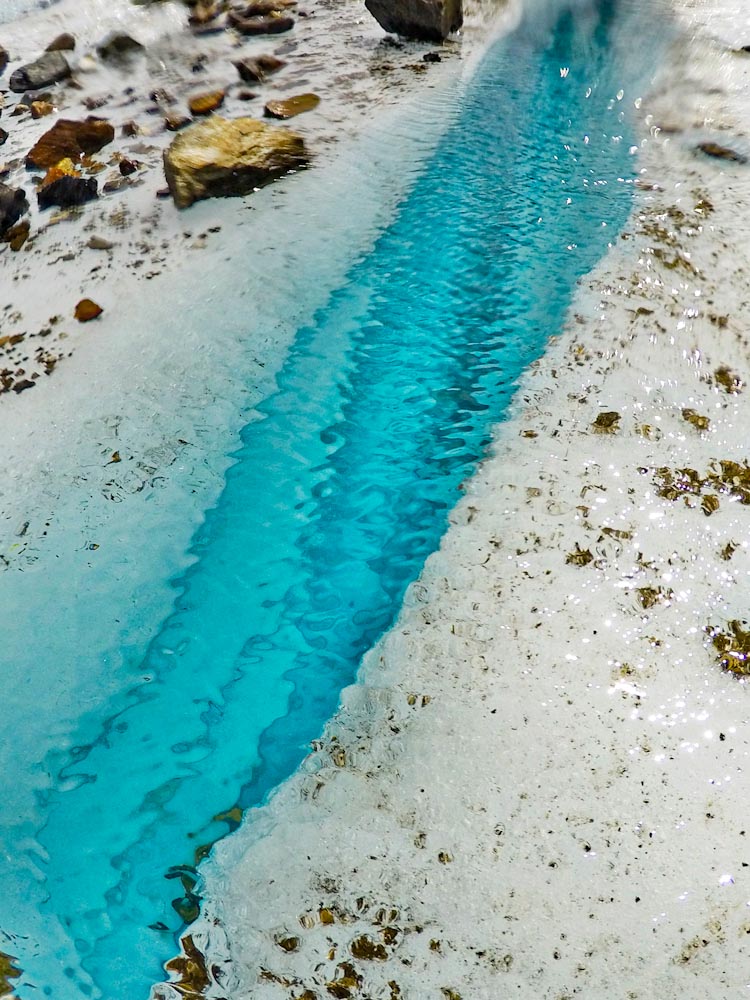
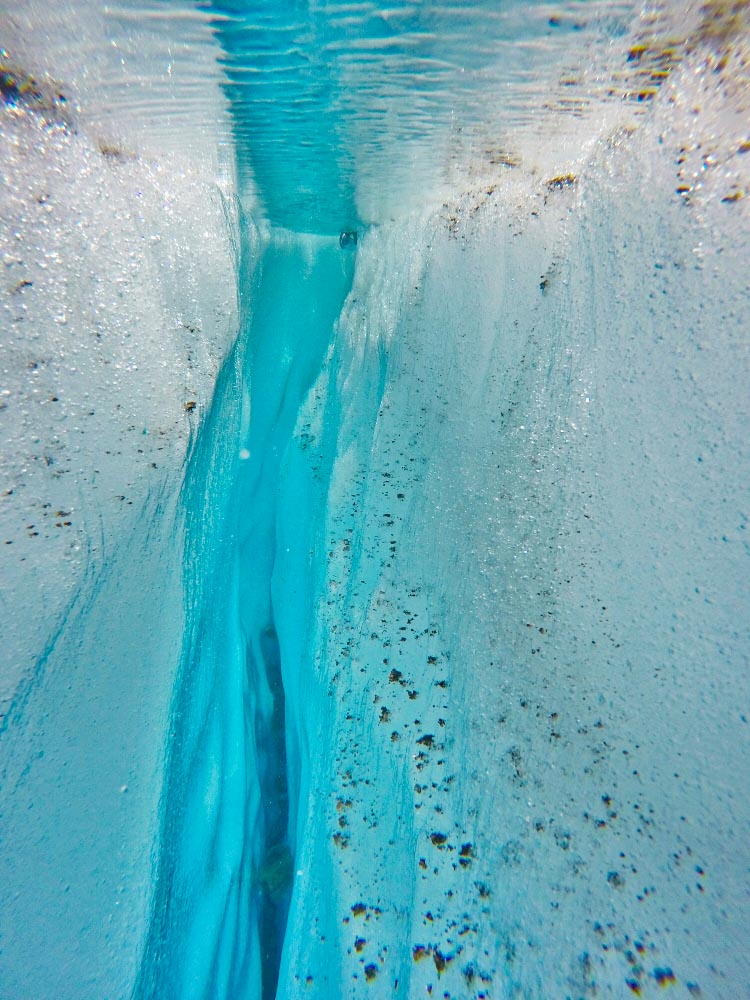
As the ice melts, it creates small streams and funnels that swirl around the surface. The melted glacial water is delicious, but you should drink it in small doses. It doesn’t contain any minerals and can be difficult for an unprepared body to process. The water may also contain impurities from materials accumulated in the ice over the millennia.
When two streams of water meet on a glacier, they can form a vertical tube, that reaches the bottom of the glacier. This is known as a moulin.
Ice caves
The ice cave is of the most beautiful things to see on the glacier. They can range in size from small openings that are only a few feet in diameter to large, complex systems of tunnels and chambers. Ice caves are formed when the glacier melts, creating channels and openings in the ice. These openings can then be enlarged by the flowing water, wind, and other erosional forces.
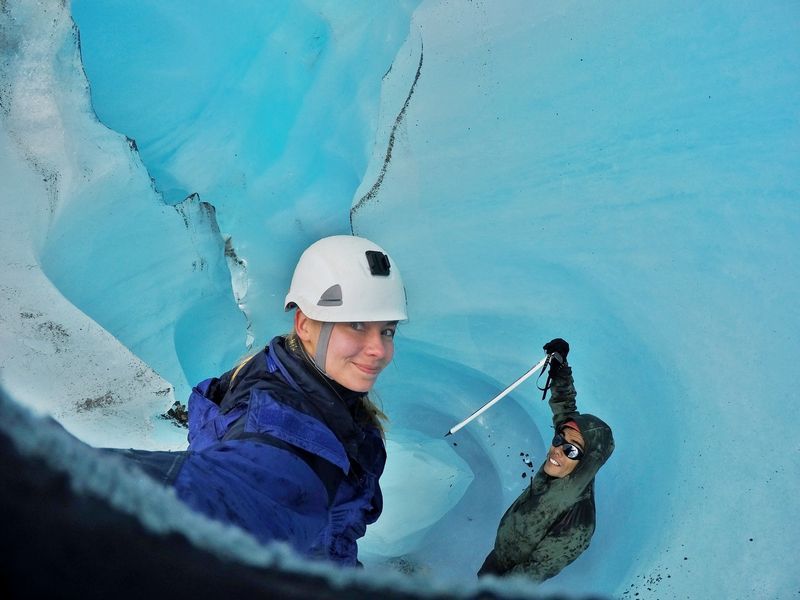
The ice caves on the Exploradores glacier are constantly changing shape and size, with arches forming and collapsing. We had the chance to climb into a few of them. It’s amazing to think that the Exploradores glacier is a living organism that is constantly moving. Every group of visitors gets to experience it differently.
Is It Worth Hiking The Exploradores Glacier?
Overall, the ice trek on the Exoloradores was an experience I’ll never forget. If you’re planning a trip to Patagonia, don’t miss your chance to witness the Exploradores Glacier in all its glory. It might not be there in 20 years.
What Else To Do in Puerto Rio Tranquilo
🛶 Visit the Marble Caves. These beautiful caves are located on a peninsula in the General Carrera Lake. They can be reached by boat or kayak from Puerto Rio Tranquilo.
Don’t miss my article: Patagonian Marvels: A guide to the Marble Caves of Puerto Rio Tranquilo
🏇 See a jineteada competition. The region is known for its equestrian cultures, such as Chilean rodeo and jineteada.
Check out my post: Taming the Tempest: Jineteada Competition in Patagonia
🐟 Go fishing. The General Carrera Lake is home to a variety of fish, including rainbow trout. It is a popular spot for fly fishing.
